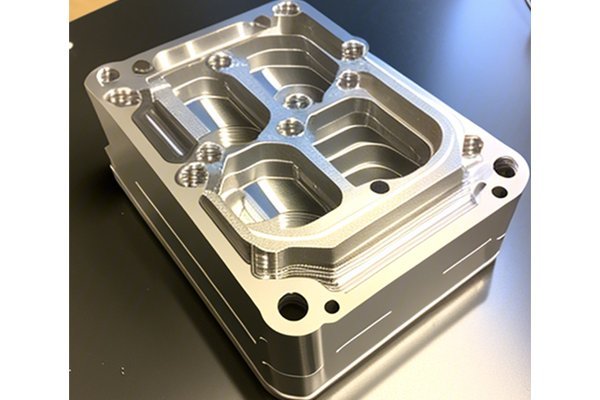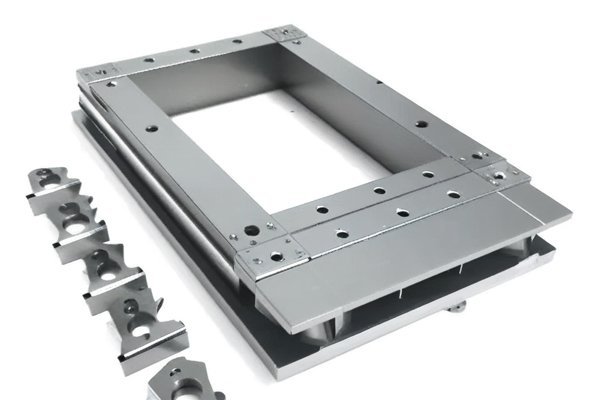Did you know that businesses employing CNC (Computer Numerical Control) machining for rapid prototyping can reduce time-to-market by up to 90%? In today’s competitive landscape, where innovation and speed are key competitive advantages, understanding the ways CNC machining can enhance rapid prototyping is crucial. Whether you are an engineer, product manager, or a startup owner, knowing how CNC machining can help bring your ideas to life efficiently is vital.
In this blog, we will dive deep into the benefits of CNC machining for rapid prototyping of complex designs, discussing techniques, technologies, and best practices that you can leverage to optimize your prototype development process. By the end, you will not only gain knowledge on the advantages of CNC machining but also learn how to implement these techniques effectively.
The Importance of Rapid Prototyping
Rapid prototyping is a crucial step in the product development cycle. From concept to production, it allows businesses to quickly create a physical version of their ideas. Traditional prototyping methods, such as handcrafting or using injection molds, can be time-consuming and often lead to increased costs and production delays. CNC machining, however, revolutionizes the process.
What Makes CNC Machining Different?
CNC machining utilizes pre-programmed computer software to control the movement of machinery. This offers a high degree of precision and repetition, making it an ideal choice for creating prototypes. With CNC machining, you can expect the following benefits:
Benefits of CNC Machining for Rapid Prototyping
CNC machining can produce prototypes dramatically faster than traditional methods. Where a manual method may take days or weeks to create one prototype, CNC can deliver finished products in a matter of hours. This speed is crucial for businesses that need to validate their concepts quickly.
As production speeds increase, so do cost savings. CNC machining minimizes labor costs and material waste due to its precision and automation. Businesses can also reduce overhead by eliminating unnecessary iterations, as the first prototypes are more likely to meet design specifications.
One of the defining characteristics of CNC machining is its ability to produce complex geometries with ease. Whether you need intricate designs or unique angles, CNC machining does not shy away from intricate shapes that would be nearly impossible to create by hand.
CNC machines are programmed to perform the same operation repeatedly, ensuring a level of consistency that is hard to achieve manually. This is particularly beneficial for industries where tolerances are critical, such as aerospace or medical device manufacturing.
CNC machining allows designers the flexibility to iterate on their designs quickly. If changes or improvements are required, the digital model can be modified, and the prototype can be produced at little additional cost or time.
With CNC machining, the material is removed from a solid block through a subtractive process. This leaves you with little waste, as many designs are optimized for material savings. In contrast, additive techniques often utilize substantial support material.
Best Practices in CNC Machining for Rapid Prototyping
To capitalize on the advantages mentioned above, it is essential to implement best practices in CNC machining:

A proficient CAD (Computer-Aided Design) software enables teams to create detailed models and simulate machining operations before physical fabrication. Choosing robust software can reduce errors in the design phase.
Regular maintenance of CNC machinery ensures precision and reliability. Avoid downtime by implementing routine checks to keep machines in good working order.
Specialized cutting tools can enhance the accuracy of complex designs. Invest in high-quality tooling and keep up with advancements in cutting technologies for the best results.
Rather than developing an entire prototype at once, consider prototyping critical components first. This can help identify weaknesses in the design early and save time on later iterations.
Bring together designers, engineers, and machinists to ensure alignment across the production process. Communication can lead to better design iterations and more efficient production timelines.
Case Studies of Successful CNC Machining for Rapid Prototyping
To illustrate the transformative capabilities of CNC for rapid prototyping, let’s look at a few case studies:
A leading aerospace manufacturer utilized CNC machining for the rapid prototyping of complex aerospace components. By adopting CNC technology, they reduced design validation time from six months to just a few weeks, allowing them to significantly shrink time-to-market for new aircraft models.
A consumer electronics start-up leveraged CNC machining to refine their innovative product design. By accessing CNC prototypes, they were able to conduct extensive user testing and feedback sessions, ultimately resulting in a much-improved final product and increased market interest.
A medical device company needed high-precision components that adhered to strict regulatory standards. Utilizing CNC machining, they managed to create prototypes rapidly, allowing them to stay compliant while still innovating in technological advancements.
In today’s fast-paced market, the ability to produce high-quality prototypes quickly can set a business apart from its competition. CNC machining has shown its tremendous worth in enhancing the rapid prototyping process, allowing for precision, speed, and cost-effectiveness.
As we’ve explored in this blog, adopting CNC machining not only boosts the efficiency of product development but also supports innovation, allowing businesses to gain a competitive edge.
Remember, the world we live in prizes efficiency and quality. For any business looking to innovate, the rapid prototyping capabilities of CNC machining represent a vital tool. Embracing this technology can foster a culture of rapid innovation, enabling you to adapt to market needs and consumer demands swiftly.
Reflect on this: Are you ready to take your prototyping processes to the next level? The insights shared here will enlighten your approach, allowing you to harness the power of CNC machining for your projects. Start embracing these techniques today, and witness the transformation in your rapid prototyping capabilities.






